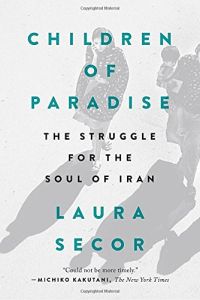加入 getAbstract 阅读摘要

加入 getAbstract 阅读摘要
Laura Secor
Children of Paradise
The Struggle for the Soul of Iran
Riverhead, 2017
看看什么内容?
A gripping look inside Iranian culture and politics from the 1980s to the present day.
Recommendation
What do you think of first when you think of Iran? Western media and policy often frame Iran as either an ultra-religious backwater or a fierce nemesis. The reality of Iran is much more complex. As journalist Laura Secor puts it, “Iran is not a happy place, but it is a dignified one.” Secor offers a unique approach to Iran’s history since 1979: examining it through the eyes of citizens who loved their country enough to try to reform it. Her deftly interwoven portraits reveal Iran’s inseparable and often contradictory intellectual, cultural and political development.
Summary
About the Author
Laura Secor is an American journalist whose work has appeared in The New Yorker.

















Comment on this summary